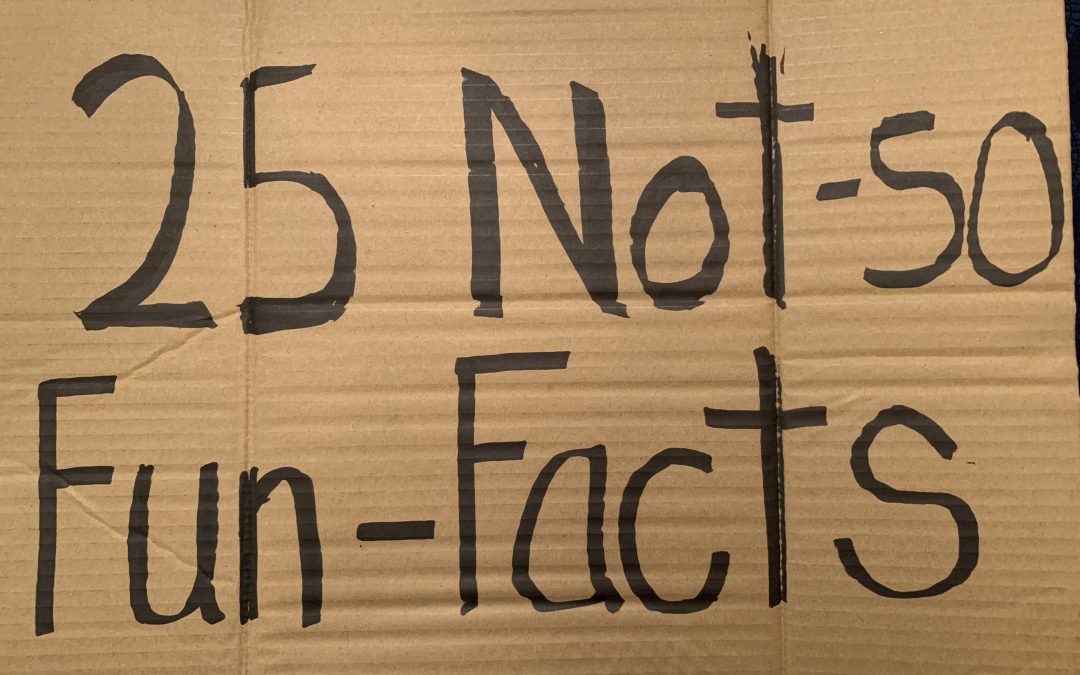Oftentimes homelessness starts with mental issues, post traumatic stress disorder, drug use, and disability. One possible reaction is to assume the Darwinist position. This would say that those who cannot provide for themselves will either go hungry or not have a place to live. While most people don’t outright adhere to this position, it is often the underlying assumption that many of us have, especially when we simplify the position into lazy people and non-lazy people. Another possible position is to assume the altruist position. This would say that we should do everything we can to help those who have little. It, too, often over simplifies the problem. Not all homeless people are the same, and many require different types of assistance. These are 25 hard-to-swallow facts about homelessness.
- More than 600,000 people are ‘homeless’ on any given night in America. This includes those sleeping in shelters, transitional housing, under bridges or in any other way unsheltered.
- There are 138,000 homeless children under the age of 18.
- More than 40,000 veterans are homeless. Most served in the Vietnam War, many others serving in the wars in the Middle East.
- Many people are homeless because they can’t afford rent. Since the 1980’s, federal funding for low-income housing has dropped precipitously. The Department of Housing and Urban Development has seen its budget drop 50 percent in recent decades — resulting in the loss of over 10,000 low-income homes.
- Millions of families spend more than half their monthly income on rent alone. It is considered healthy to spend 30 percent. The US needs about 7 million more low-income apartments for low-income families to ease this problem.
- There is only enough public rental assistance to help 1 in 4 extremely low-income households. Those who do not receive it are on multi-year waiting lists.
- While only 6 percent of the general population suffers from mental illness, 20-25 percent of the homeless population suffers from one. The most common illnesses are PTSD and schizophrenia.
- More and more cities are criminalizing homelessness. Upwards of 200 cities nationally have criminalized sleeping and dwelling in public spaces (even cars), panhandling, and more.
- The average homeless person is a single, middle-aged man (31-50) who is a member of a minority group (usually African-American). More than 1 in 3 homeless people has a disability.
- 40 percent of the homeless population is female. More than 90 percent of homeless women are fleeing domestic abuse. Women and women with families make up the fastest-growing group of the homeless population in the US.
- It costs taxpayers, on average, over $30,000 a year per homeless person. This sum is a collection of jail and court fees, shelters and programs, and hospital bills, as well as much more.
- It is estimated to cost $10,000 per homeless person to provide housing for those who seek it. That is 3-4 times less than the cost per year of keeping people on the streets.
- There are over 6 times more abandoned houses than homeless people in America.
- 70 percent of homeless people live in cities; 20 percent live in suburbs; and 10 percent live in rural areas.
- While only 7 percent of youth identify as LGBTQ, this population makes up approximately 40 percent of homeless teens. They are 120 percent more likely to be homeless than other teens.
- HIV rates for homeless people are 3-9 times higher than the rest of the population.
- 20,000 homeless youth are forced into prostitution. 57 percent of homeless youth spend at least a day each month without food.
- California accounts for 20 percent of the homeless population in the US. California, New York, Florida, Texas and Massachusetts account for half the total homeless population.
- The 3 most commonly cited causes of homelessness are poverty, lack of affordable housing, and unemployment.
- In any given year about 1 out of every 200 American adults will be homeless.
- A growing number of anti-homelessness laws around the country has caused the US to receive criticism from the United Nations Human Rights Committee. At least 30 cities have criminalized giving food to the homeless. In some areas, like Hawaii, officials have attempted to solve homelessness by providing one-way plane tickets elsewhere
- A study at Princeton found that our brains tend to process images of homeless people more like they process objects than actual human beings.
- Up to 25 percent of homeless people are currently employed. Many more have had and lost jobs while on the street due to the lack of access to showers, clean clothes, and transportation to and from work.
- Celebrities such as Jim Carrey, Jennifer Lopez, Dr. Phil, Sylvester Stallone, Steve Harvey, and Halle Berry all spent time homeless.
http://facts.net/homelessness/#f3
https://www.huffingtonpost.com/bill-quigley/ten-facts-about-homelessn_b_5977946.html
https://list25.com/25-hard-to-swallow-facts-about-homelessness/4/


Recent Comments